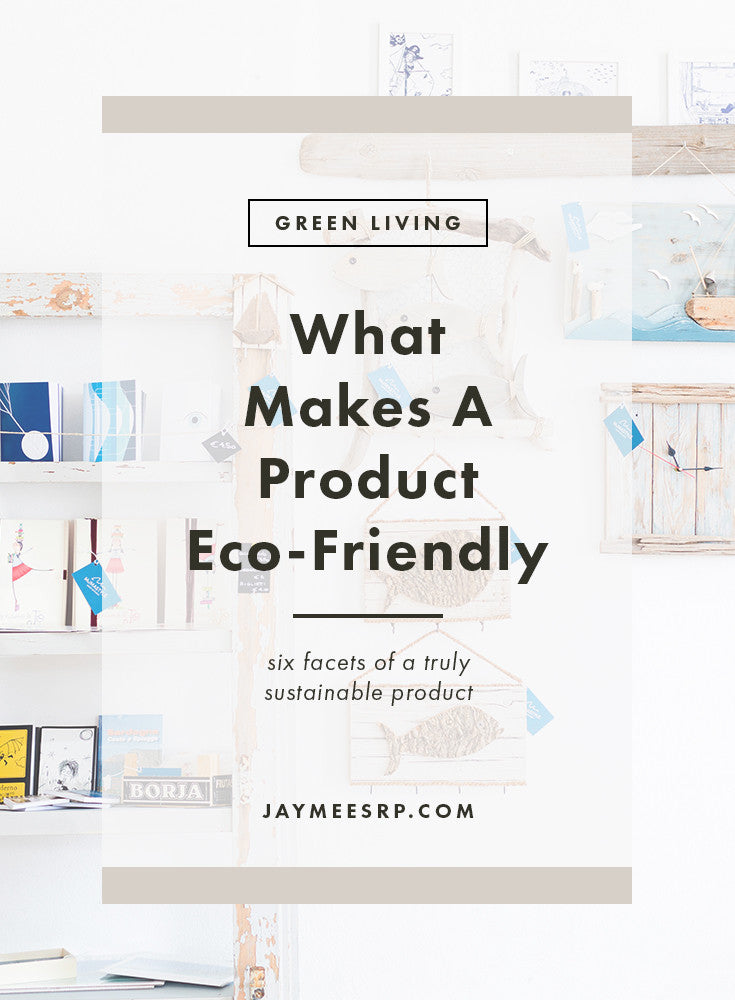
We all know that purchasing eco-friendly products and materials is good for the environment, but what exactly makes a product eco-friendly?
We hear praise for materials like bamboo for being rapidly renewable, but there is a lot more than the content of a product that needs to be considered when determining if it is truly eco-friendly. If you have ever wondered what else goes into making something eco-friendly, here are the six facets of a truly sustainable product.
Farming & Forestry Practices
Determining the sustainability of a product begins possibly before the material has even been grown. The materials in eco-friendly products are grown in responsibly managed forests without the use of harmful pesticides. You have likely seen an FSC logo on various wood and paper products or packaging and wondered what that meant. FSC stands for the Forest Stewardship Council and it is an independent, non-profit organization that sets the standard for how companies and forests are certified taking into account their environmental, economic, and social impact. By purchasing FSC certified products you are promoting responsible forest management that will help protect forests for future generations.
Materials
Now comes the part that most of us consider when buying eco-friendly products, the materials they are made of. A sustainable material will fall into one of three categories, rapidly renewable, reclaimed, or recycled. A rapidly renewable resource is a material that can be naturally regenerated or replenished at a rapid rate of 10 years or less. Some of these materials include bamboo, cork, corn, cotton, soy, and wool. Reclaimed materials are those that are reused, salvaged, or refurbished from somewhere else, such as reclaimed barn wood used for flooring. Recycled materials contain solid waste such as paper, glass, and plastic that have been diverted from the landfill. But be sure to check what kind of recycled content the product contains. Post-consumer recycled content means the waste has come from the consumer, like the glass bottles we put in our recycling bin. Pre-consumer recycled content refers to the waste that was created during the manufacturing process that has be recycled back into the product, never making it to the consumer before it was recycled. Although all recycled content is good, look for 100% post-consumer recycled content for the most eco-friendly product.
Manufacturing
After the materials have been harvested in a responsible way, reclaimed from another site, or recycled from pre or post-consumer trash they are then manufactured into the finished products we buy. How the manufacturing happens is a big factor in determining how eco-friendly a product is. Some things to consider are the chemicals used in the manufacturing process, the amount of waste resulting from the manufacturing process, and the amount of water used to manufacture the product. Unfortunately companies are not required to label the chemicals and building materials used in the product on the label so it can be hard to know if a product contains volatile organic compounds (VOC’s), carcinogens, or other harsh chemicals without doing some heavy research.
Labor
Not only do we need to consider the product itself, but also the laborers working and handling the product.
If a product is manufactured using toxic chemicals workers are being exposed to that hazard every day. It is also important to think about how a company treats their employees. Are they of legal working age? Are they given a lunch break? Are they paid a fair living wage?
Socio-Economic Impact
Another aspect of sustainability to think about is how a company affects its community. Does the company have a low carbon footprint? Do they give back to the community? Are they helping to boost the local economy?
Location
A product may be sustainable in all the ways I’ve mentioned above, but how far does the final product have to travel to get to the consumer? More energy is used, and more greenhouse gases are emitted the farther away from the consumer a product is manufactured, so buying local has the lowest impact on the environment, especially if the product is made of locally sourced materials. Not only will buying from a local company reduce our global carbon footprint, but the money will be going back into local communities.
Finishes and Adhesives
This category mainly pertains to building materials and finishes, but when choosing something like flooring it is important to consider what is being used to finish the material. An eco-friendly cork flooring is not going to be doing any good if it is finished with a highly toxic stain or varnish. Planning a remodel? Greendepot is a great source for sustainable building materials and finishes.
All in all, if a product has some aspect of sustainability whether it is made of recycled content, or crafted by local artisans, helping the environment even a little is better than not at all.

Subscribe to our newsletter:
